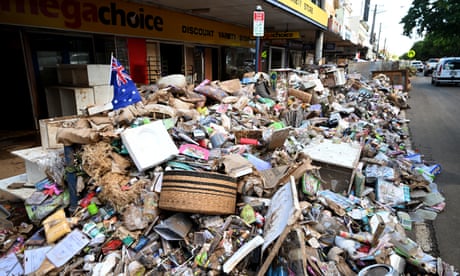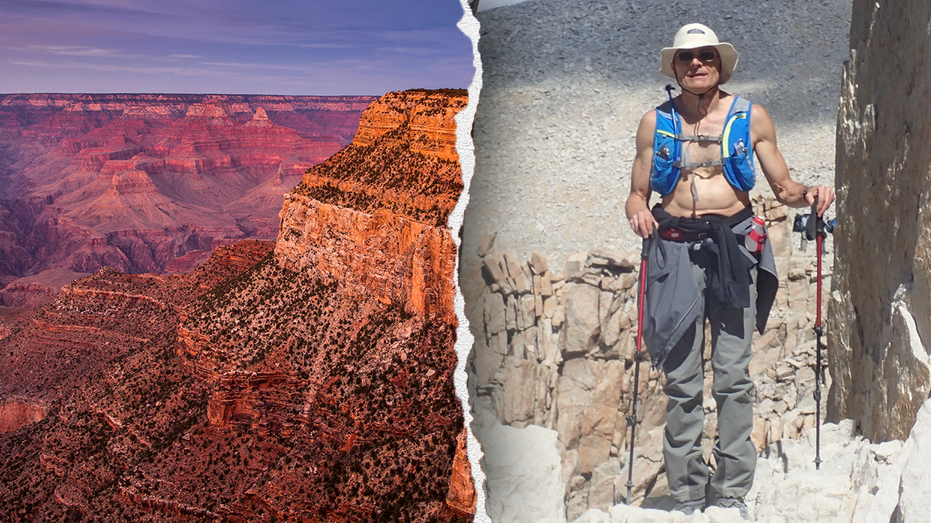- by foxnews
- 23 May 2025
‘A year’s worth of landfill’: what will happen to all the waste from flood-damaged homes in Queensland and NSW?
‘A year’s worth of landfill’: what will happen to all the waste from flood-damaged homes in Queensland and NSW?
- by theguardian
- 09 Mar 2022
- in news

Mountains of waste pulled from flood-ravaged homes and businesses along Australia's east coast are heading for landfill sites and temporary storage, but questions are being raised over a New South Wales government plan to store the rotting mounds at a quarry.
In Brisbane, the city's mayor, Adrian Schrinner, said the floods had generated a year's worth of landfill. Almost 30,000 cubic metres have already been dropped at council tips and recycling centres, but how much more is left was not known.
Councils hit by floods were worried piles of rubbish could become breeding grounds for mosquitoes and attract rats and mice.
Waste industry groups called for better planning for disasters, saying there was a lack of areas at landfill sites that were being held in contingency for major events.
In flooded Lismore in the Northern Rivers region of NSW, the council, contractors, fire and rescue officers and defence personnel were collecting more than 1,000 tonnes of flood waste every day and moving it to a temporary site at a tip in East Lismore.
John Walker, the general manager of Lismore city council, said the state government was taking over the job of collecting and removing the waste.
From Wednesday, he said, all the waste would start to be transferred to a quarry site the state government had identified near the village of Tevan - 30km east.
Walker said: "Some of this problem is it's just unsightly. But if there's food, it rots and then we can get vermin coming in."
He said the council anticipated it would be two weeks before all the debris was cleared.
"People there are traumatised," he said. "It just sits on the street. Ultimately it's totally depressing and it's really important we clean it up.
"I think recycling is off the agenda. It's just a pile of mess."
Adam Guise, a Lismore councillor for the Greens, says the sight of the wall of flood-damaged materials along kerbs through the town was "absolutely heartbreaking."
"For me, as an environmentalist, this is a tragedy. This is the side effect of disasters like this where so much waste is generated. Everything from people's homes is on the street. The environmental consequences are astronomical."
Guise's own house in north Lismore, which escaped flooding in 2017, was inundated this time with water up to the ceilings.
"I expected maybe a foot or two in the house, but it got to the ceilings. We lost everything that was in the house. It's all on the kerb like everyone else's.
"We should be pulling out all the stops to generate facilities that can - en masse - deal with waste like this and find other markets for it. Homes here are made from hardwood timber from old growth forests and that's a crime if it ends up in landfill."
Colin Sweet, chief executive of the Australian Landfill Owners Association, which has councils and private industry among its members, said in NSW and Queensland there was a lack of planning to cope with sudden influxes of waste into landfills from disasters.
There was no shortage of landfill sites, but there was a shortage of landfill cells - areas prepared to environmental regulations that include linings to prevent leaching - and infrastructure to channel methane, a powerful greenhouse gas, that is generated as waste rots.
On the plan to use a quarry, Sweet said: "This is what comes up when we don't have enough space. Environmental management becomes compromised.
"If you just throw it in a quarry there's no leachate management - it's like throwing it in the back yard and pretending it's not there."
In Gympie, one of the first towns to be flooded north of Brisbane, the city council told the Guardian the public tip had seen almost 4,000 drops since last Tuesday - six times the usual rate.
A council statement said the amount of waste was unprecedented and while some material could be stored, a majority would go to landfill "and this will unfortunately shorten the life of the current cell, which is in a critical way for space at the moment".
Sodden rubbish could become a breeding ground for mosquitoes and attract vermin, the statement said.
Brisbane city council told the Guardian that up to Monday almost 30,000 cubic metres of waste had been collected.
Just over half had been taken by residents to resource recovery centres around the city, with the rest being collected from the kerb by council workers, contractors and ADF personnel, who the council said were "working tirelessly to remove items, which are both unsightly and unsafe".
The council could not say how much was still to be collected - 122 food waste bins have been placed in flood-hit suburbs.
Georgina Davis, CEO of the Waste and Recycling Industry Association of Queensland, said the number of businesses affected was "unprecedented and well in excess of [the 2011 Brisbane floods]".
She said since 2011 landfill capacity in south-east Queensland had fallen and there was no new capacity being planned.
Areas used after the 2011 floods "have since been built on and are no longer accessible", she said, and a lack of large scale emergency response planning meant "recovery will become more difficult for our communities".
The association's own members had been hit, with depots and assets flooded and infrastructure damaged.
She said waste collected from kerbs was being taken to intermediary facilities so some items like metals from white goods, as well as timber, garden waste and some building materials. In the city's 2011 floods, about 60% of the waste by weight was recovered.
Tony Khoury, executive director of the Waste Contractors and Recyclers Association of NSW, said: "Flood waters carry risks such as water-borne diseases and the key priority is the prompt collection and landfilling of all waste."
He said because most waste was collected in compactor trucks "there is little opportunity for reuse or recycling of flood affected waste".
Last week, the NSW government said people in 17 local government areas would not have to pay the state's waste levy if they took building materials, furniture and any other flood-generated waste to landfill sites.
A NSW government statement said "regional emergency waste storage sites" had been identified in the Northern Rivers region. The quarry site had been inspected by EPA officials and environmental controls would be checked on Thursday, the statement said.
Some $210m had been announced to coordinate the clean-up, with fire and rescue personnel and ADF helping residents and businesses, and the government was committed to working with councils and the community.
"The sheer volume of waste material makes the recovery of recyclable material challenging," the statement said. "However, attempts to recover separated materials, such as whitegoods and green waste, may be possible."
In a statement, Queensland environment minister, Meghan Scanlon, said 19 councils had been given $1m each to help the clean-up and 12 waste levy exemptions had been issued for 12 councils.
Councils had disaster plans and the state gave advice and support for dealing with waste, she said.
"With unprecedented flooding in both large swathes of Queensland and NSW, the issue here isn't capacity at our landfills, but capacity for council contractors and industry to pick up waste," she said.
Waste sector representatives were being consulted "to determine their processing capabilities to help manage the clean-up," Scanlon added.
- by foxnews
- descember 09, 2016
United Airlines flight returns to Hawaii after concerning message found on bathroom mirror; FBI investigating
United Airlines Flight 1169 to Los Angeles returned to Hawaii after a "potential security concern" aboard the plane. The FBI and police are investigating.
read more


